Smoothed Particle Hydrodynamics (SPH) Analysis of Slope Soil–Retaining Wall Interaction and Retaining Wall Motion Response
Abstract
1. Introduction
2. Numerical Simulation Method
2.1. SPH Theory
2.2. Constitutive Model
2.3. Boundary Conditions
2.4. Contact Model
3. Numerical Model
Experimental Control
4. Conclusions
- By comparing the simulation results with the test results, the applicability of this model to the translation failure of retaining walls was verified. Displacement under different base friction coefficients was analyzed, which further verified that the model conformed to the anti-translation checking conditions in the code.
- SPH analysis was carried out on the motion response of retaining walls with different base lengths. The overturning situation and overturning angle of different retaining walls were compared. It was verified that the model conformed to the anti-overturning checking conditions in the code.
- Overall, the model accurately describes the motion response of the retaining wall under different conditions after soil impact. The model proved to be suitable for practical engineering cases and can provide a brand new numerical simulation platform for the design and checking calculation of retaining walls and the impact of soil on structures after landslides.
Author Contributions
Funding
Data Availability Statement
Conflicts of Interest
References
- Cheng, Y.; Huo, A.; Zhao, Z.; Peng, J. Analysis of loess fracture on slope stability based on centrifugal model tests. Bull. Eng. Geol. Environ. 2021, 80, 3647–3657. [Google Scholar] [CrossRef]
- Zhu, C.; He, M.; Karakus, M.; Cui, X.; Tao, Z. Investigating Toppling Failure Mechanism of Anti-dip Layered Slope due to Excavation by Physical Modelling. Rock Mech. Rock Eng. 2020, 53, 5029–5050. [Google Scholar] [CrossRef]
- Zhigang, T.; Chun, Z.; Manchao, H.; Kuiming, L. Research on the safe mining depth of anti-dip bedding slope in Changshanhao Mine. Geomech. Geophys. Geo-Energy Geo-Resour. 2020, 6, 36. [Google Scholar] [CrossRef]
- Liu, Z.Q.; Guo, D.; Lacasse, S.; Li, J.H.; Yang, B.B.; Choi, J.C. Algorithms for intelligent prediction of landslide displacements. J. Zhejiang Univ. A 2020, 21, 412–429. [Google Scholar] [CrossRef]
- Hu, M. Study on SPH Motion Model and Monitoring Method of Soil Slope. D.; University of Science and Technology Beijing: Beijing, China, 2015. (In Chinese) [Google Scholar]
- Asteris, P.G.; Rizal, F.I.M.; Koopialipoor, M.; Roussis, P.C.; Ferentinou, M.; Armaghani, D.J.; Gordan, B. Slope Stability Classification under Seismic Conditions Using Several Tree-Based Intelligent Techniques. Appl. Sci. 2022, 12, 1753. [Google Scholar] [CrossRef]
- Kumar, V.; Gupta, V.; Jamir, I. Hazard evaluation of progressive Pawari landslide zone, Satluj valley, Himachal Pradesh, India. Nat. Hazards 2018, 93, 1029–1047. [Google Scholar] [CrossRef]
- Kotake, N.; Tatsuoka, F.; Tanaka, T.; Siddiquee, M.S.A.; Huang, C.-C. FEM simulation of the failure of reinforced sand slopes subjected to footing load. Geosynth. Int. 2004, 11, 1–18. [Google Scholar] [CrossRef]
- Singh, S.K.; Negi, M.S.; Singh, J. Strengthening of Slope by Soil Nailing Using Finite Difference and Limit Equilibrium Methods. Int. J. Geosynth. Ground Eng. 2021, 7, 64. [Google Scholar] [CrossRef]
- Maugeri, M.; Motta, E.; Raciti, E. Mathematical modelling of the landslide occurred at Gagliano Castelferrato (Italy). Nat. Hazards Earth Syst. Sci. 2006, 6, 133–143. [Google Scholar] [CrossRef]
- Tang, H.; Cui, J.; Zhang, X.; Zhang, L.; Liu, L. Cosserat-particle finite element method for large deformation analysis of rock and soil. Chin. J. Geotech. Eng. 2023, 45, 495–502. [Google Scholar]
- Li, S.H.; Wang, J.G.; Liu, B.S.; Dong, D.P. Analysis of Critical Excavation Depth for a Jointed Rock Slope Using a Face-to-Face Discrete Element Method. Rock Mech. Rock Eng. 2007, 40, 331–348. [Google Scholar] [CrossRef]
- Wang, H.B.; Zhang, B.; Mei, G.; Xu, N. A statistics-based discrete element modeling method coupled with the strength reduction method for the stability analysis of jointed rock slopes. Eng. Geol. 2020, 264, 105247. [Google Scholar] [CrossRef]
- Feng, Z.K.; Xu, W.J. GPU material point method (MPM) and its application on slope stability analysis. Bull. Eng. Geol. Environ. 2021, 80, 5437–5449. [Google Scholar] [CrossRef]
- Wu, F.Y.; Sun, W.; Li, X.C.; Guan, Y.; Dong, M. Material point method-based simulation of dynamic process of soil landslides considering pore fluid pressure. Int. J. Numer. Anal. Methods Geomech. 2023, 47, 2385–2404. [Google Scholar] [CrossRef]
- Lodato, G.; Cossins, P.J. Smoothed Particle Hydrodynamics for astrophysical flows. Eur. Phys. J. Plus 2011, 126, 44. [Google Scholar] [CrossRef]
- Rasio, F.A.; Lombardi, J.C. Smoothed particle hydrodynamics calculations of stellar interactions. J. Comput. Appl. Math. 1999, 109, 213–230. [Google Scholar] [CrossRef][Green Version]
- Wadsley, J.W.; Veeravalli, G.; Couchman, H.M.P. On the treatment of entropy mixing in numerical cosmology. Mon. Not. R. Astron. Soc. 2008, 387, 427–438. [Google Scholar] [CrossRef]
- Li, L.; Wang, Y. Identification of failure slip surfaces for landslide risk assessment using smoothed particle hydrodynamics. Georisk Assess. Manag. Risk Eng. Syst. Geohazards 2020, 14, 91–111. [Google Scholar] [CrossRef]
- Yu, M.; Huang, Y.; Deng, W.; Cheng, H. Forecasting landslide mobility using an SPH model and ring shear strength tests: A case study. Nat. Hazards Earth Syst. Sci. 2018, 18, 3343–3353. [Google Scholar] [CrossRef]
- Mori, H.; Chen, X.; Leung, Y.F.; Shimokawa, D.; Lo, M.K. Landslide hazard assessment by smoothed particle hydrodynamics with spatially variable soil properties and statistical rainfall distribution. Can. Geotech. J. 2020, 57, 1953–1969. [Google Scholar] [CrossRef]
- Ma, G.D.; Bui, H.; Lian, Y.J.; Tran, K.M.; Nguyen, G.D. A five-phase approach, SPH framework and applications for predictions of seepage-induced internal erosion and failure in unsaturated/saturated porous media. Comput. Methods Appl. Mech. Eng. 2022, 401, 115614. [Google Scholar] [CrossRef]
- Hu, Y.X.; Zhu, Y.G.; Li, H.B.; Li, C.J.; Zhou, J.W. Numerical estimation of landslide-generated waves at Kaiding Slopes, Houziyan Reservoir, China, using a coupled DEM-SPH method. Landslides 2021, 18, 3435–3448. [Google Scholar] [CrossRef]
- Monaghan, J.J.; Gingold, R.A. Shock simulation by the particle method SPH. J. Comput. Phys. 1983, 52, 374–389. [Google Scholar] [CrossRef]
- Gao, T.; Xie, S.; Hu, M.; Fang, H.; Yi, C.; Bao, A. Soil-soil engaging component SPH model based on a hypoplastic constitutive model. Trans. Chin. Soc. Agric. Eng. 2022, 38, 47–55. [Google Scholar] [CrossRef]
- Hu, M.; Xie, M.W.; Wang, L.W. SPH simulations of post-failure flow of landslides using elastic-plastic soil constitutive model. Chin. J. Geotech. Eng. 2016, 38, 58–67. [Google Scholar] [CrossRef]
- Bui, H.H.; Fukagawa, R.; Sako, K.; Ohno, S. Lagrangian meshfree particles method (SPH) for large deformation and failure flows of geomaterial using elastic–plastic soil constitutive model. Int. J. Numer. Anal. Methods Geomech. 2008, 32, 1537–1570. [Google Scholar] [CrossRef]
- Morris, J.P.; Fox, P.J.; Zhu, Y. Modeling Low Reynolds Number Incompressible Flows Using SPH. J. Comput. Phys. 1997, 136, 214–226. [Google Scholar] [CrossRef]
- Dong, X.W.; Liu, G.R.; Li, Z.L.; Zeng, W. A smoothed particle hydrodynamics (SPH) model for simulating surface erosion by impacts of foreign particles. Tribol. Int. 2016, 95, 267–278. [Google Scholar] [CrossRef]
- Mou, T.P.; Luo, F.Y.; Xiao, H.P.; Qiu, Z.X.; Zhang, G. Centrifuge Modeling on the Slope Supproted by Vertical Retaining Wall. Highway 2022, 67, 9–14. (In Chinese) [Google Scholar]
- Aluko, O.; Seig, D. An experimental investigation of the characteristics of and conditions for brittle fracture in two-dimensional soil cutting. Soil Tillage Res. 2000, 57, 143–157. [Google Scholar] [CrossRef]

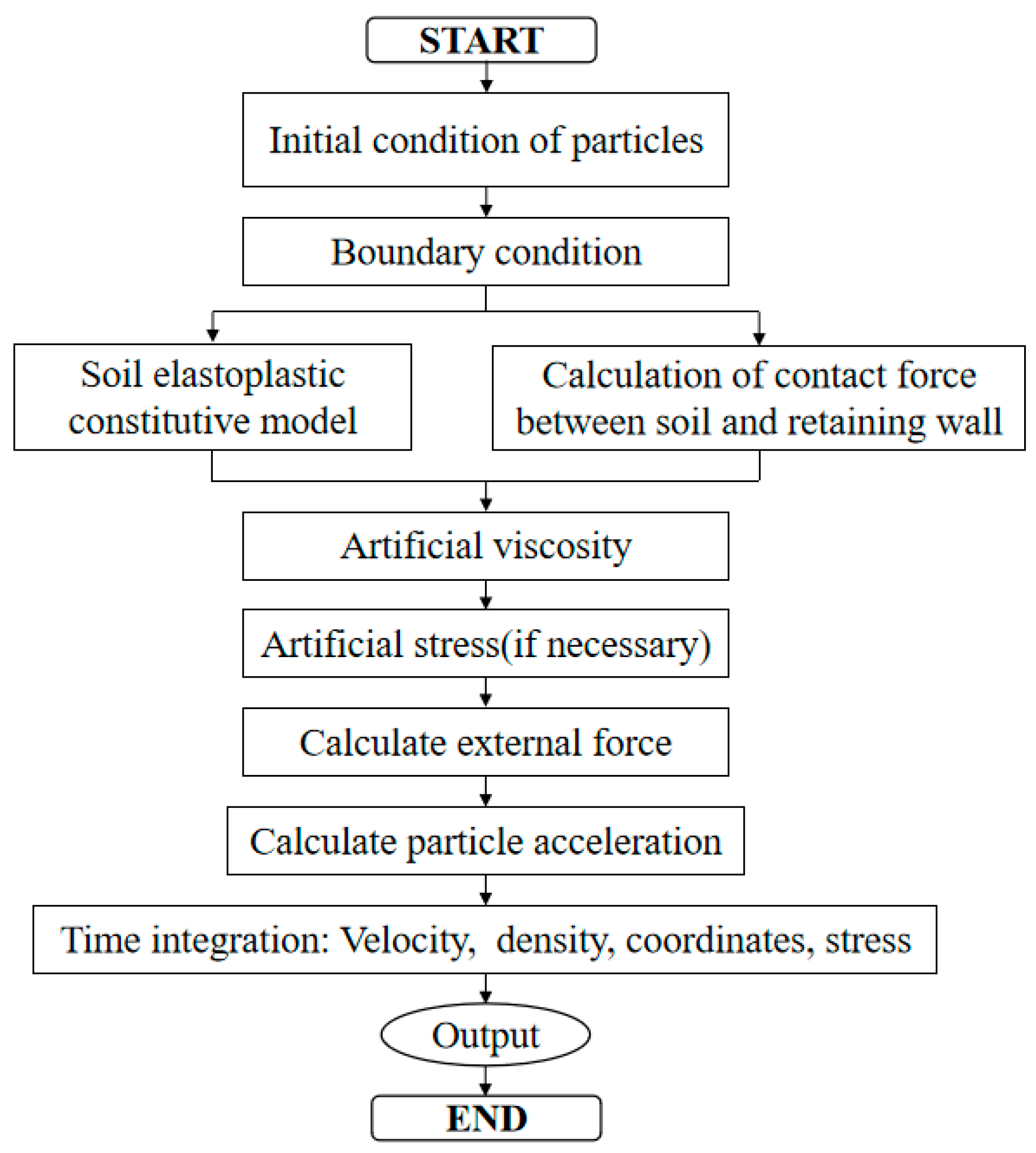



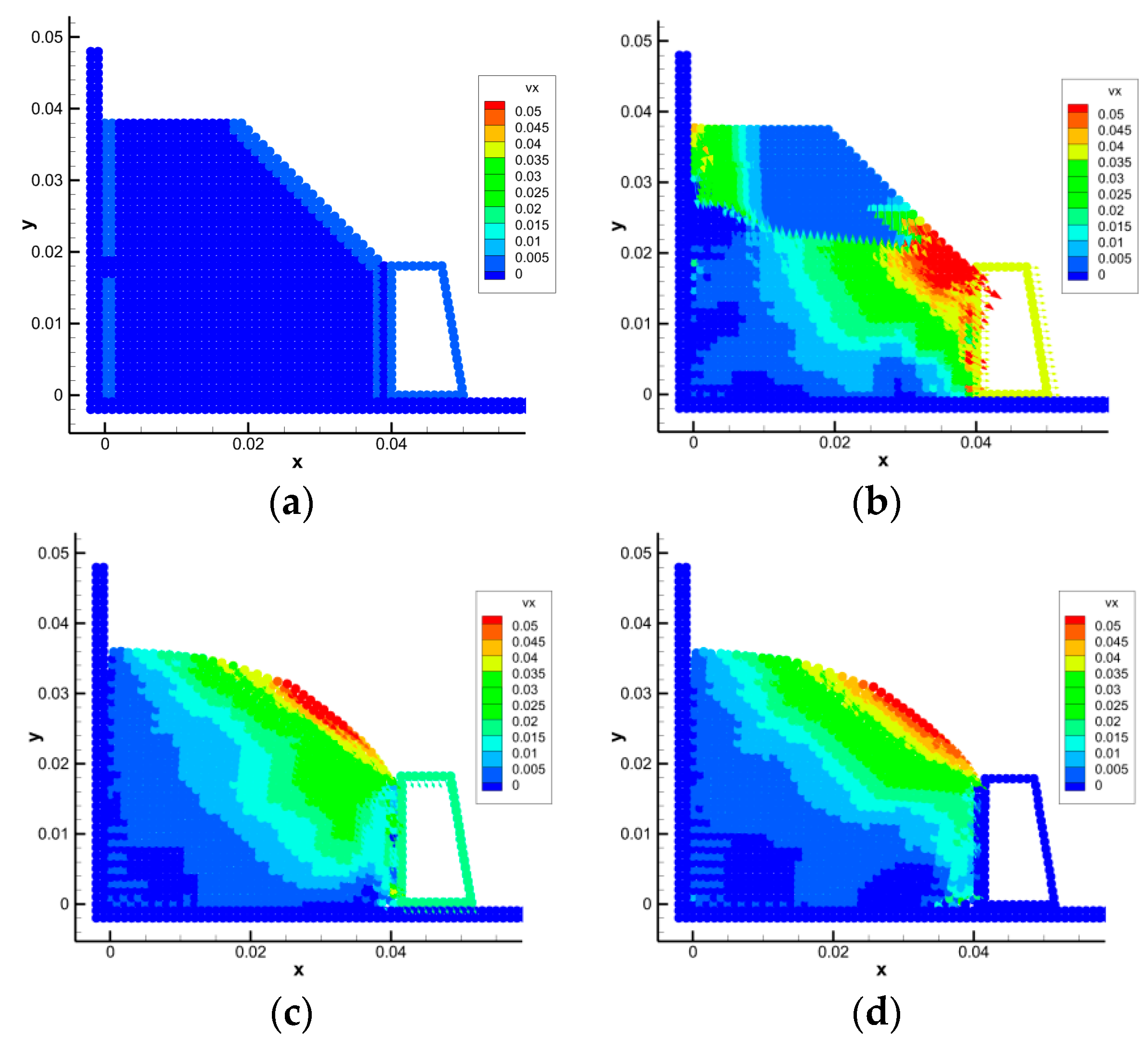


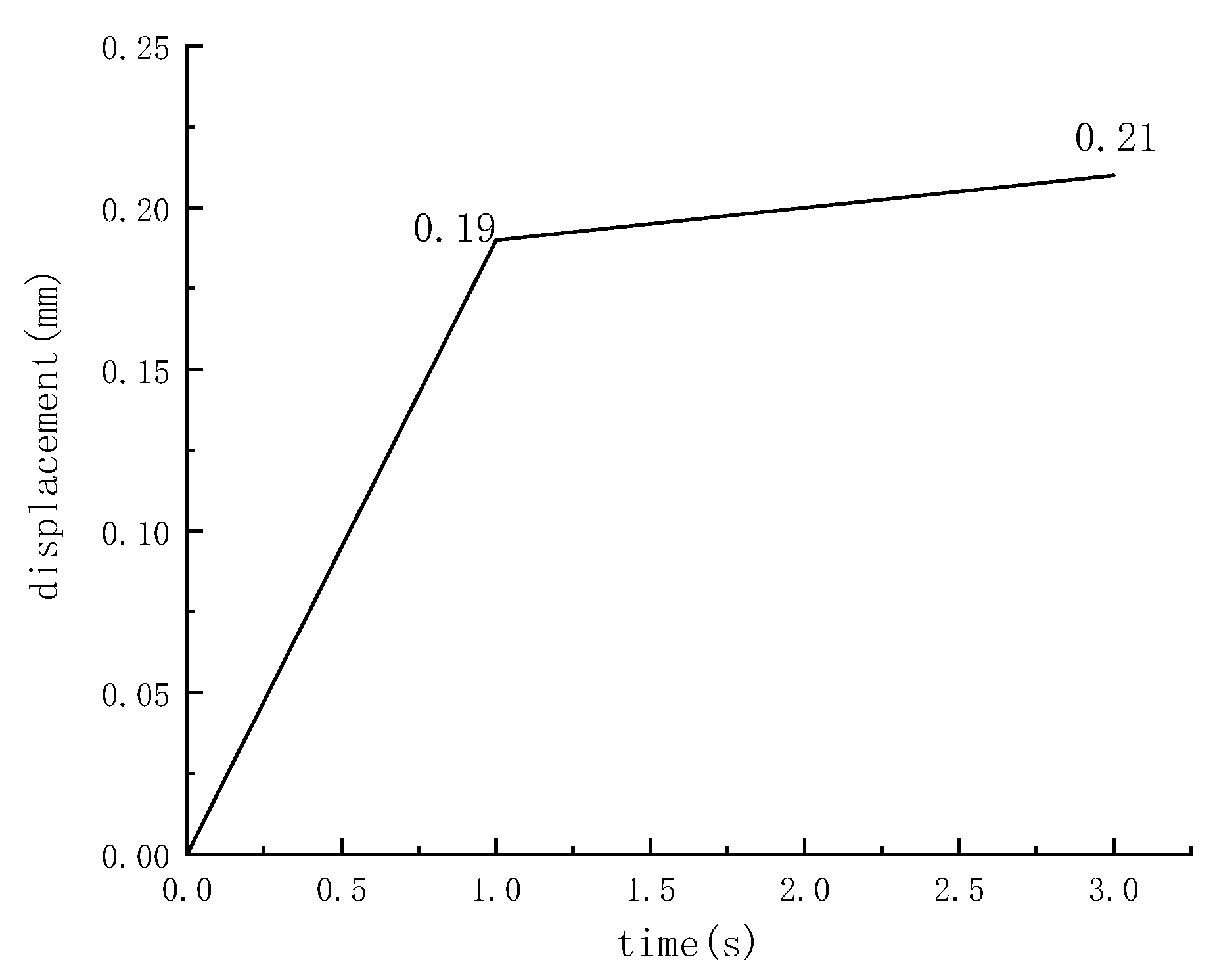

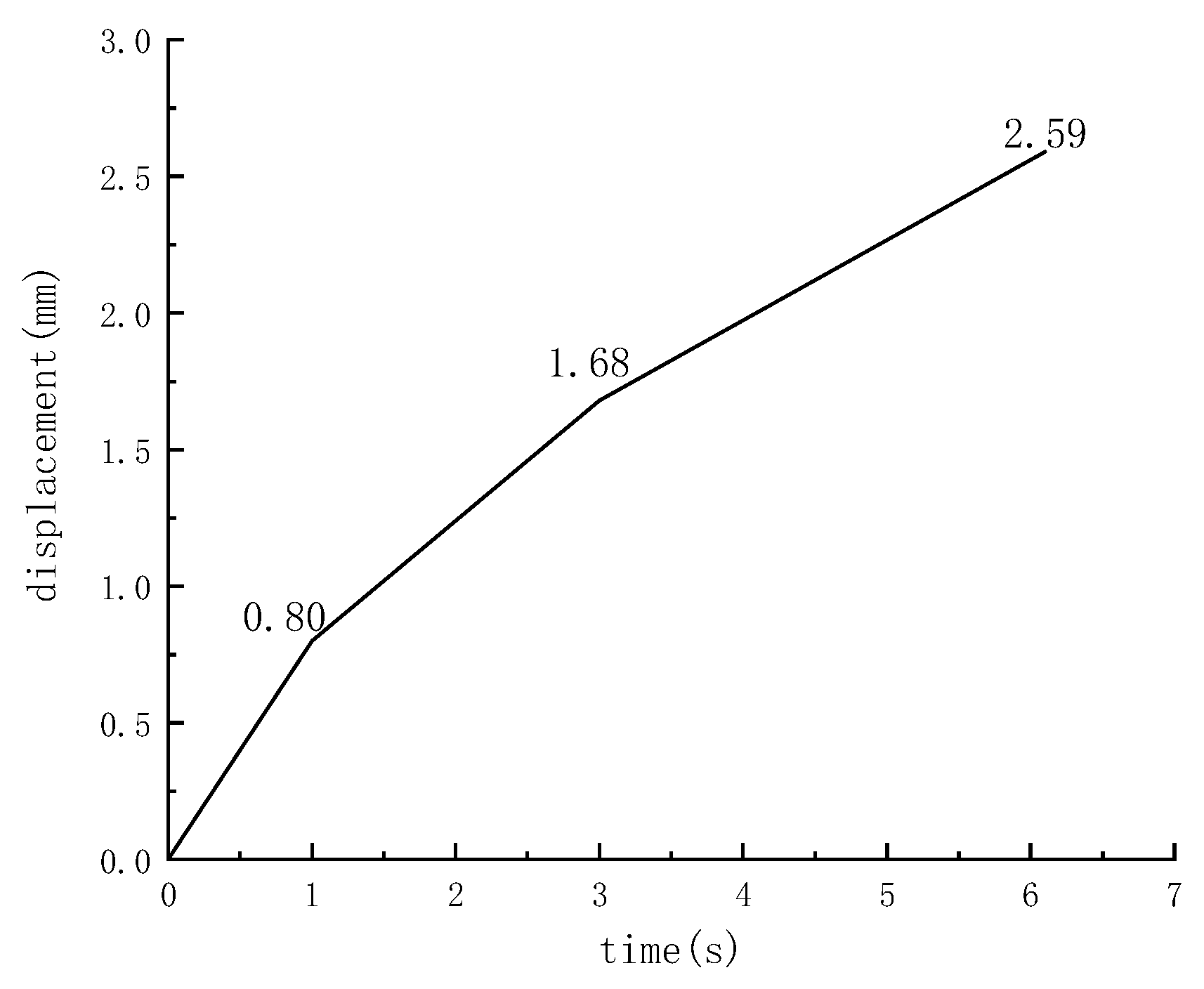
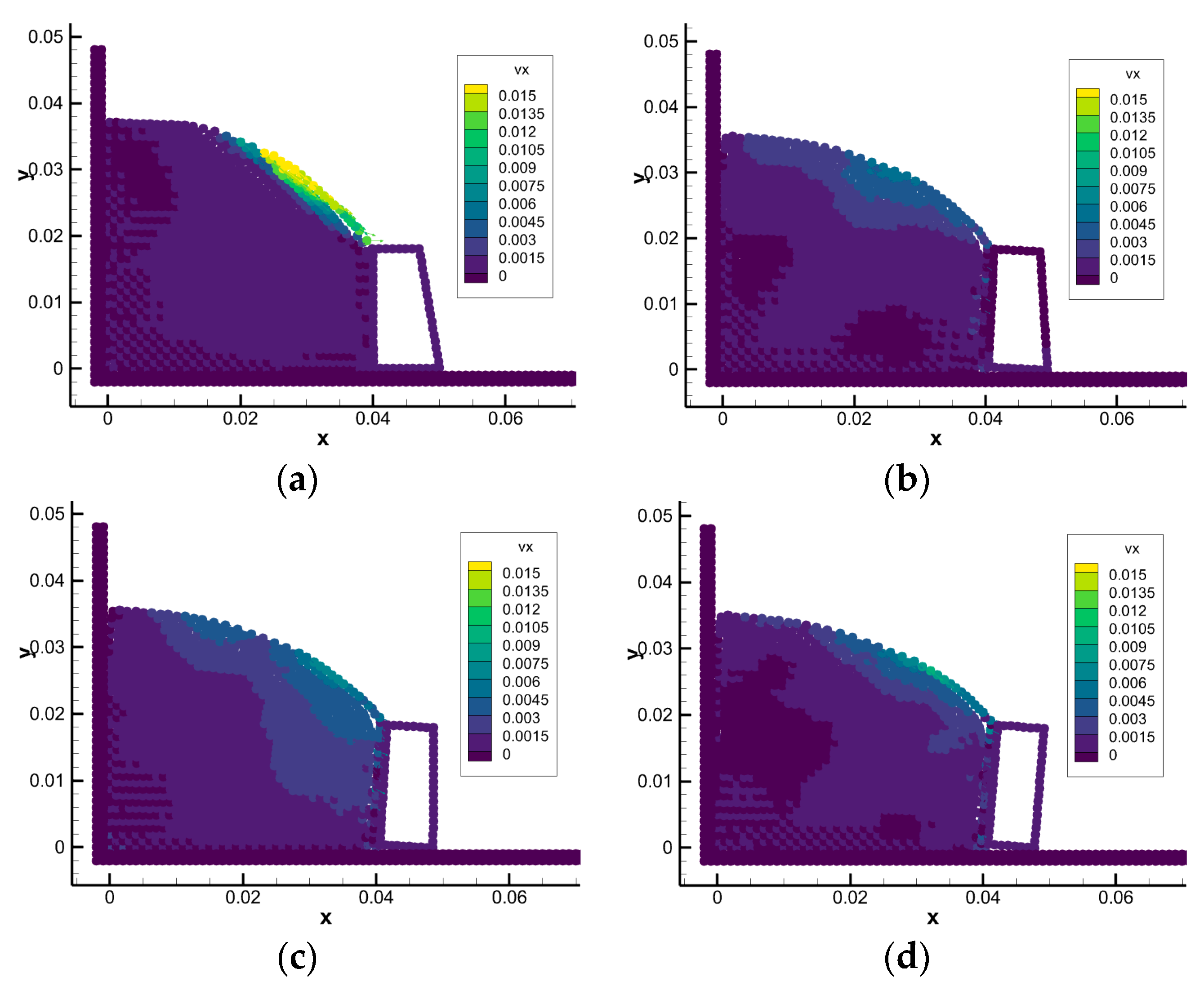
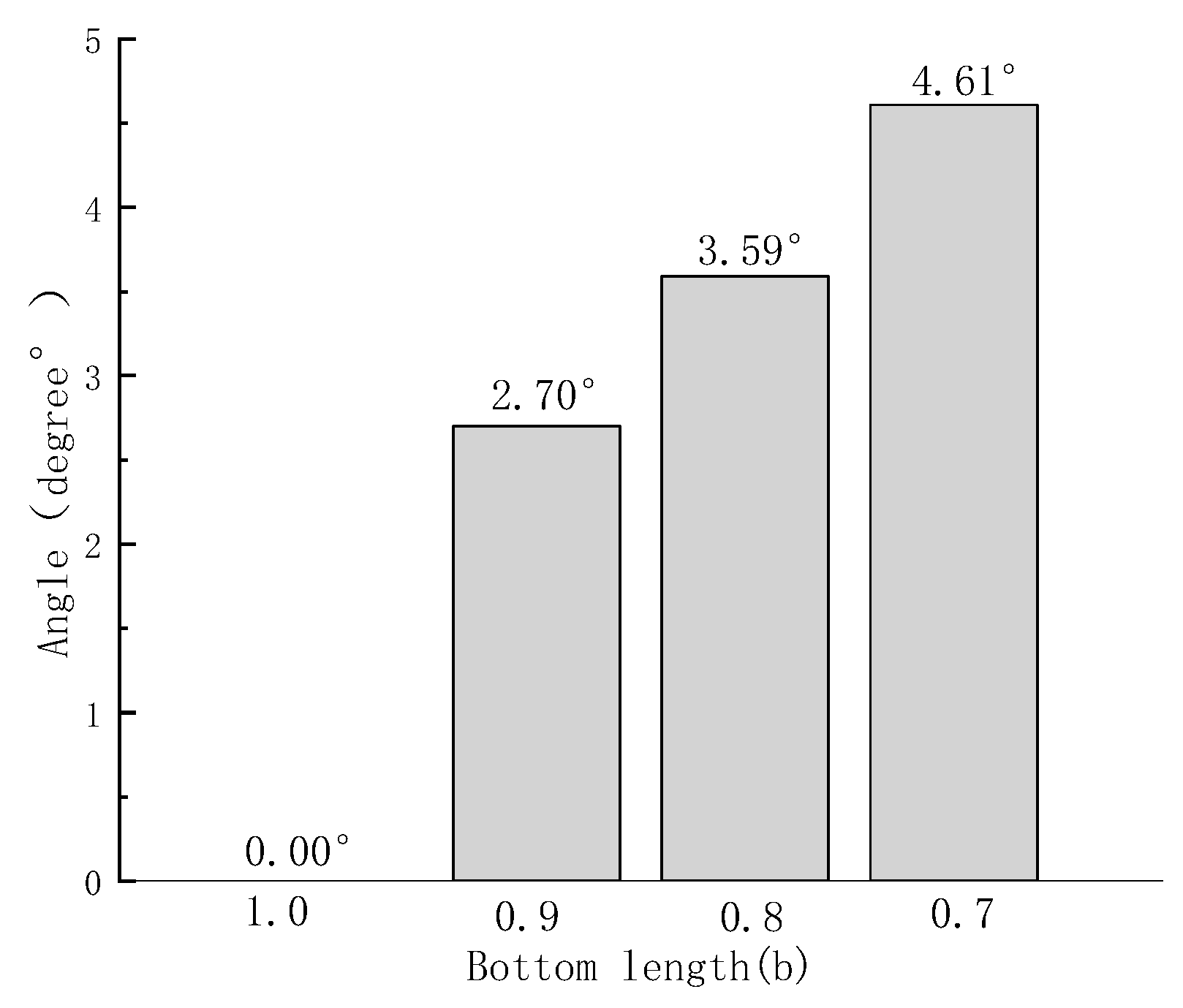
| Types of Rock and Soil | Friction Factor |
|---|---|
| Clay | 0.2–0.4 |
| Silt | 0.25–0.35 |
| Sandy soil | 0.3–0.4 |
| Crushed stone | 0.4–0.5 |
| Soft rock | 0.4–0.6 |
Disclaimer/Publisher’s Note: The statements, opinions and data contained in all publications are solely those of the individual author(s) and contributor(s) and not of MDPI and/or the editor(s). MDPI and/or the editor(s) disclaim responsibility for any injury to people or property resulting from any ideas, methods, instructions or products referred to in the content. |
© 2024 by the authors. Licensee MDPI, Basel, Switzerland. This article is an open access article distributed under the terms and conditions of the Creative Commons Attribution (CC BY) license (https://creativecommons.org/licenses/by/4.0/).
Share and Cite
Yang, Q.; Tan, Q.; Ren, Y.; Fang, H.; Hu, M.; Bao, A. Smoothed Particle Hydrodynamics (SPH) Analysis of Slope Soil–Retaining Wall Interaction and Retaining Wall Motion Response. Processes 2024, 12, 411. https://doi.org/10.3390/pr12020411
Yang Q, Tan Q, Ren Y, Fang H, Hu M, Bao A. Smoothed Particle Hydrodynamics (SPH) Analysis of Slope Soil–Retaining Wall Interaction and Retaining Wall Motion Response. Processes. 2024; 12(2):411. https://doi.org/10.3390/pr12020411
Chicago/Turabian StyleYang, Qijin, Qiuting Tan, Yi Ren, Hanzhen Fang, Man Hu, and Anhong Bao. 2024. "Smoothed Particle Hydrodynamics (SPH) Analysis of Slope Soil–Retaining Wall Interaction and Retaining Wall Motion Response" Processes 12, no. 2: 411. https://doi.org/10.3390/pr12020411
APA StyleYang, Q., Tan, Q., Ren, Y., Fang, H., Hu, M., & Bao, A. (2024). Smoothed Particle Hydrodynamics (SPH) Analysis of Slope Soil–Retaining Wall Interaction and Retaining Wall Motion Response. Processes, 12(2), 411. https://doi.org/10.3390/pr12020411





